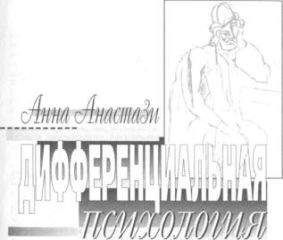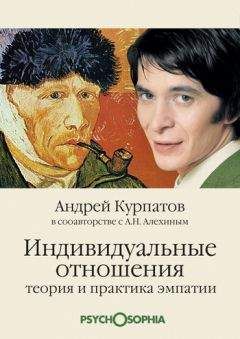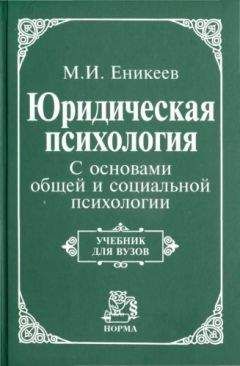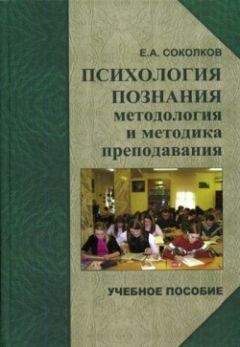Анна Анастази - Дифференциальная психология. Индивидуальные и групповые различия в поведении

Скачивание начинается... Если скачивание не началось автоматически, пожалуйста нажмите на эту ссылку.
Жалоба
Напишите нам, и мы в срочном порядке примем меры.
Описание книги "Дифференциальная психология. Индивидуальные и групповые различия в поведении"
Описание и краткое содержание "Дифференциальная психология. Индивидуальные и групповые различия в поведении" читать бесплатно онлайн.
Данный фундаментальный труд Анны Анастази зарекомендовал себя как один из лучших классических учебников по дифференциальной психологии мирового уровня, со знакомства с которым должен начинать любой студент, изучающий эту дисциплину. В учебнике в доступной и увлекательной форме рассматриваются проблемы индивидуальных различий человека как отдельного индивида и как представителя той или иной группы, исследуются причины и механизмы его поведения.
Рекомендуется в качестве учебного пособия для студентов, изучающих психологию человека и группы, а также для всех, кто интересуется данной тематикой.
13. Bell, R. Q. Convergence: an accelerated longitudinal approach. Child
Developm., 1953, 24, 145–152.
14. Bentz, V. J. A test-retest experiment on the relationship between age and
mental ability. Amer. Psychologist, 1953, 8, 319–320.
15. Bradway, K. P. IQ constancy on the Revised Stanford-Binet from the
preschool to the junior high school level. /. genet. Psychol., 1944, 65, 197–217.
16. Bradway, K. P. An experimental study of factors associated with Stanford-
Binet IQ changes from the preschool to the junior high school. J. genet. Psychol., 1945, 66, 107–128.
17. Brozek, J. Personality changes with age: an item analysis of the
Minnesota Multiphasic Personality Inventory. J. Geront., 1955, 10, 194–206.
18. Chodorkff, В., and Mussen, P. Qualitative aspects of the vocabulary
responses of normals and schizophrenics. J. consult. Psychol., 1952, 16, 43–48.
19. Cornell, Ethel L., and Armstrong, С. М. Forms of mental growth patterns
revealed by reanalysis of the Harvard growth data. Child Develpm., 1955, 26, 169–204.
20. Corsini, R. J., and Fassett, Katherine K. Intelligence and aging. J. genet.
Psychol., 1953, 83, 249–264.
21. Dearborn, W. F., and Rothney, J. Predicting the child's development.
Cambridge, Mass.: Sci-Art Pub., 1941.
22. Deming Jean. Application of the Compertz curve to the observed pattern
of growth in length of 48 individual boys and girls during the adolescent cycle of growth. Hum. Biol., 1957, 29, 83—122.
23. Doppelt, J. E., and Wallace, W. L. Standardization of the Wechsler Adult
Intelligence Scale for older persons. /. abnorm. Soc. Psychol., 1955, 51, 312–330.
24. Embree, R. B. A study of the graduates of University High School from
1921 to 1945, with special reference to their subsequent academic careers. Unpublished doctoral dissertation, Univer. Minn., 1947.
25. Falkner, F. Measurement of somatic growth and development in children.
Courrier (centre International de I'Enfance, Paris), 1954, 4, 169–181.
26. Falkner, F. International studies on growth and development. Children,
1955, 2, 227–229.
27. Feifel, H. Qualitative differences in the vocabulary responses of normals
and abnormals. Genet. Psychol. Monogr., 1949, 39, 151 — 204.
28. Fisher, M. В., and Birren, J. E. Age and strength. J. appl. Psychol., 1947,
31, 490–497.
29. Foulds, G. A. Variations in the intellectual activities of adults. Amer. J.
Psychol., 1949, 62, 238–246.
30. Foulds, G. A., and Raven, J. C. Normal changes in the mental abilities of
adults as age advances. /. ment. Sci., 1948, 94, 133–142.
31. Fox, Charlotte, and Birren, J. E. The differential decline of subtest scores of
the Wechsler-Bellevue Intelligence scale in 60–69 year old individuals. J. genet. Psychol., 1950, 77, 313–317.
32. Freeman, F. N., and Flory, С D. Drowth in intellectual ability as measured
by repeated tests. Monogr. Soc. Res. Child Develpm., 1937, 2, No. 2.
33. Gilbert, Jean G. Memory loss in senescence. /. abnorm. Soc. Psychol.,
1941, 36, 73–86.
34. Goodenough, Florence L., and Maurer, Katherine M. The mental growth
of children from two to fourteen years. Minneapolis: Univer. Minn. Press, 1942.
35. Gurvitz, M. S. Speed as a factor in the decline of performance with age.
Amer. Psychologist, 1952, 7, 298–299.
36. Heston, J. C, and Connell, C. F. A note on the relation between age and
performance of adult subjects on four familiar psychometric tests. /. appl. Psychol., 1941, 25, 415–419.
37. Hofstaetter, P. R. The changing composition of «intelligence»: a study of T
technique. /. genet. Psychol., 1954, 85, 159–164.
38. Honzik, Marjorie P. The constancy of mental test performance during the
preschool period. /. genet. Psychol., 1938, 52, 285–302.
39. Honzik, Marjorie P., Macfarlane, Jean W., and Allen, Lucile. The stability
of mental test performance between two and eighteen years. J. exp. Educ., 1948, 17, 309–324.
40. Hunter, E. C. Changes in scores of college students on the American
Council Psychological Examination at yearly intervals during the cjllege course. /. educ. Res., 1942, 36, 284–291.
41. Husen, T. The influence of schooling upon IQ. Theoria, 1951, 17,61–88. 42 Jersild, A. T. Emotional development. In L. Carmicyael (Ed.), Manual of
child psychology. N. Y.: Wiley, 1954, 833–917.
43. Jones, H. E., and Conrad, H. S. The growth and decline of intelligence: a
study of a homogeneous group between the ages often and sixty. Genet. Psychol. Monogr., 1933, 13, 223–298.
44. Jones, H. E., and Conrad, H. S. Mental development in adolescence. 43rd
Yearh., Nat. Soc. Stud. Educ, 1944, Part I, 146–163.
45. Jones, H. E., and Kaplan, O. J. Psychological aspects of mental disorders
in later life. In O. J. Kaplan (Ed.), Mental disorders in later life. Stanford Uniyer., Calif: Stanford Univer. Press, 1945, Ch. 4.
46. Jones, H. E., and Seashore, R. H. The development of fine motor and
mechanical abilities. 43rd Yearb., Nat. Soc. Stud. Educ, 1944, Part I, 123–145.
47. Kelly, E. L. Consistency of the adult personality. Amer. Psychologist, 1955,
10, 659–681.
48. Kinsey, A. C, et al. Sexual behavior in the human male. Philadelphia:
Saunders, 1948.
49. Kinsey, A. C, et al. Sexual behavior in the human female. Philadelphia:
Saunders, 1953.
50. Koch, Helen L. The social distance between certain racial, nationality,
and skin-pigmentation guoups in selected populations of American school children. /. genet. Psychol., 1946, 68, 63–95.
51. Kuhlen, R. G. Age differences in personality during adult years. Psychol.
Bull., 1945, 42, 333–358.
52. Kuhlen, R. G., and Thompson, G. G. Psychological studies of human
development. N. Y.: Appleton-Century-Crofts, 1952.
53. Lehman, H. C. Age and achievement. Princeton, N. J.: Princeton Univer.
Press, 1953.
54. Lehman, H. C, and Witty, P. A. The psychology of play activities. N. Y.:
Barnes, 1927.
55. Livesay, Т. М. Does test intelligence increase at the college level? /. educ.
Psychol., 1939, 30, 63–68.
56. Lorge, I. The influence of the test upon the nature of mental decline as a
function of age. /. educ. Psychol., 1939, 27, 100–110.
57. Lorge, I. Gerontology (later maturity). Ann. Rev. Psychol., 1956, 7, 349—
364.
58. Macfarlane, Jean W., Allen, Lucile, and Honzik, Marjorie P. A
developmental study of the behavior problems of normal children between twenty-one months and fourteen years. Univer. Calif. Publ. Child Develpm., 1954, 2, 1-122.
59. Marple, С. Н. The comparative susceptibility of three age levels to suggestion
of group versus expert opinion. /. soc. Psychol., 1933, 4, 176–186.
60. Miles, Catharine C. Influence of speed and age on intelligence scores of
adults. /. gen. Psychol., 1934, 10, 208–210.
61. Miles, Catharine C, and Miles, W. R. The correlation of intelligence
scores and chronological age from early to late maturity. Amer. J. Psychol., 1932, 44, 44–78.
62. Miles, W. R. Psychological aspects of aging. In E. V. Cowdry (Ed.), Problems
of ageing. Baltimore: Williams & Wilkins, 1942, 756–784.
63. Miner, J.B. Intelligence in the United States: a survey — with conclusions for
manpower utilization in education and employment. N. Y.: Springer, 1956.
64. Munn, N. L. The evolution and growth of human behavior. Boston: Houghton
Mifflin, 1955.
65. Nelson, E. N. P. Persistence of attitudes of college students fourteen years
later. Psychol. Monogr., 1954, 68, No. 2.
66. Nelson, E. N. P. Patterns of religious attitude shifts from college to fourteen
years later. Psychol. Monogr., 1956, 70, No. 17.
67. Nelson, V. L., and Richards, T. W. Studies in mental development: I.
Performance on Gesell items at six months and its predictive value for performance at two and three years. J. genet. Psychol., 1938, 52, 303–325.
68. Nyssen, R., and Delys, L. Contribution a l'etude du probleme du
declin intellectuei en fonction de l'ge. Arch. Psychol., 1952, 33, 295–310.
69. Owens, W. A., Jr. Age and mental abilities: a longitudinal study. Genet.
Psychol. Monogr., 1953, 48, 3-54.
70. Pressey, S. L., and Jones, A. W. 1923–1953 and 20–60 age changes in
moral codes, anxieties, and interests, as shown by the «X-0 Tests». /. Psychol., 1955, 39, 485–502.
71. Pressey, S. L., and Kuhlen, R. G. Psychological development through the
lifespan. N. Y.: Harper, 1957.
72. Radke-Yarrow, Marian, Trager, Helen G., and Davis, Hadassah. Social
perceptions and attitudes of children. Genet. Psychol. Monogr.,1949, 40, 327–447.
73. Raven, J. C. The comparative assessment of intellectual ability. Brit. J.
Psychol., 1948, 39, 12–19.
74 Roff, M. A statistical study of intelligence test performance. /. Psychol
1941, 11, 371–386.
75 Ruch, F. M. The differentiative effects of age upon human learning. J. gen
Psychol., 1934, 11, 261–286.
76. Schaie, K. W., Rosenthal, F., and Perlman, R. M. Differential mental
deterioration of factouially «pure» functions in later maturity. J. Geront., 1953, 8, 191–196.
77. Shakow, D., Dolkart, M. В., and Goldman, R. The memory function in
psychoses of the aged. Dis. Nerv. Syst., 1941, 2, 43–48.
78. Shakow, D., and Goldman, R. The effect of age on the Stanford-Binet
vocabulary score of adults. /. educ. Psychol., 1938, 31, 241–256.
79. Shock, N. W. Growth curves. In S. S. Stevens (Ed.), Handbook of experimental
psychology. N. Y.: Wiley, 1951, 330–346.
80. Shock, N. W. Aging and psychological adjustment. Rev. Educ. Res., 1952,
22, 439–458.
81. Shuey, Audrey M. Improvement in scores on the American Council
Psychological Examination from freshman to senior year. /. educ. Psychol., 1948, 39, 417–426.
82. Shuttleworth, F. K. Sexual maturation and the physical growth of girls age
six to nineteen. Monogr. Soc. Res. Child Developm., 1937', 2, No. 5.
83. Shuttleworth, F. K. The adolescent period: a graphic atlas. Monogr. Soc. Res.
Child Develpm., 1949, 14, No. 1.
84. Smith, Madorah E. A comparison of certain personality traits as rated in
the same individuals in childhood and fifty years later. Child Develpm., 1952, 23, 159–180.
85. Sontag, L. W. Differences in modifiability of fetal bthavior and physiology.
Psychosomat. Med., 1944, 6, 151–154.
86. Sontag, L. W. The Pels Research Institute for the Study of Human Development.
Yellow Springs, Ohio: Antioch College, 1946.
87. Sontag, L. W. A research institute on child growth and development reports
progress. Child, 1951, 16, 54–56.
88. Strong, E. K., Jr. Changes of interest with age. Stanford Univer., Calif:
Stanford Univer. Press, 1931.
89. Strong, E. K., Jr. Vocational interests of men and women. Stanford Univer.,
Calif.: Stanford Univer. Press, 1943.
90. Strong, E. K., Jr. Permanence of ibnerest scores over 22 years. /. appl.
Psychol., 1951, 35, 89–91.
91. Terman, L. M., and Oden, Melita H. The gifted child grows up. Stanford
Univer., Calif.: Stanford Univer. Press, 1947.
92. Terman, L. M., and Oden, Melita H. Genetic studies of genius. Vol. V.
Stanford Univer., Calif.: Stanford Univer. Press, 1958.
93. Thorndike, E. L. On the improvement in intelligence scores from thirteen
to nineteen. /. educ. Psychol., 1926, 17, 73–76.
94. Thorndike, E. L., et al. Adult learning. N. Y.: Macmillian, 1928.
95. Thomdike, R. L. The effect of interval between test and retest on the constancy
of the IQ. J. educ. Psychol., 1933, 24, 543–549.
96. Thorndike, R. L. «Constancy» of the IQ. Psychol. Bull., 1940, 37, 167—
186.
97. Thorndike, R. L. The prediction of intelligence at college entrance from
earlier test. /. educ. Psychol., 1947, 38, 129–148.
98. Thorndike, R. L. Growth of intelligence during adolescence. /. genet. Psychol.,
1948, 72, 11–15.
99. Thorndike, R. L., and Gallup, G. H. Verbal intelligence of the American
adult. /. gen. Psychol., 1944, 30, 75–85.
100. Thurstone, L. L., and Ackerson, L. The mental growth curve for the
Binet tests. /. educ. Psychol., 1929, 20, 569–583.
101. Vernon, P. E. Changes in abilities from 14–20 years. Advanc. Sci., 1948,
Подписывайтесь на наши страницы в социальных сетях.
Будьте в курсе последних книжных новинок, комментируйте, обсуждайте. Мы ждём Вас!
Похожие книги на "Дифференциальная психология. Индивидуальные и групповые различия в поведении"
Книги похожие на "Дифференциальная психология. Индивидуальные и групповые различия в поведении" читать онлайн или скачать бесплатно полные версии.
Мы рекомендуем Вам зарегистрироваться либо войти на сайт под своим именем.
Отзывы о "Анна Анастази - Дифференциальная психология. Индивидуальные и групповые различия в поведении"
Отзывы читателей о книге "Дифференциальная психология. Индивидуальные и групповые различия в поведении", комментарии и мнения людей о произведении.

















